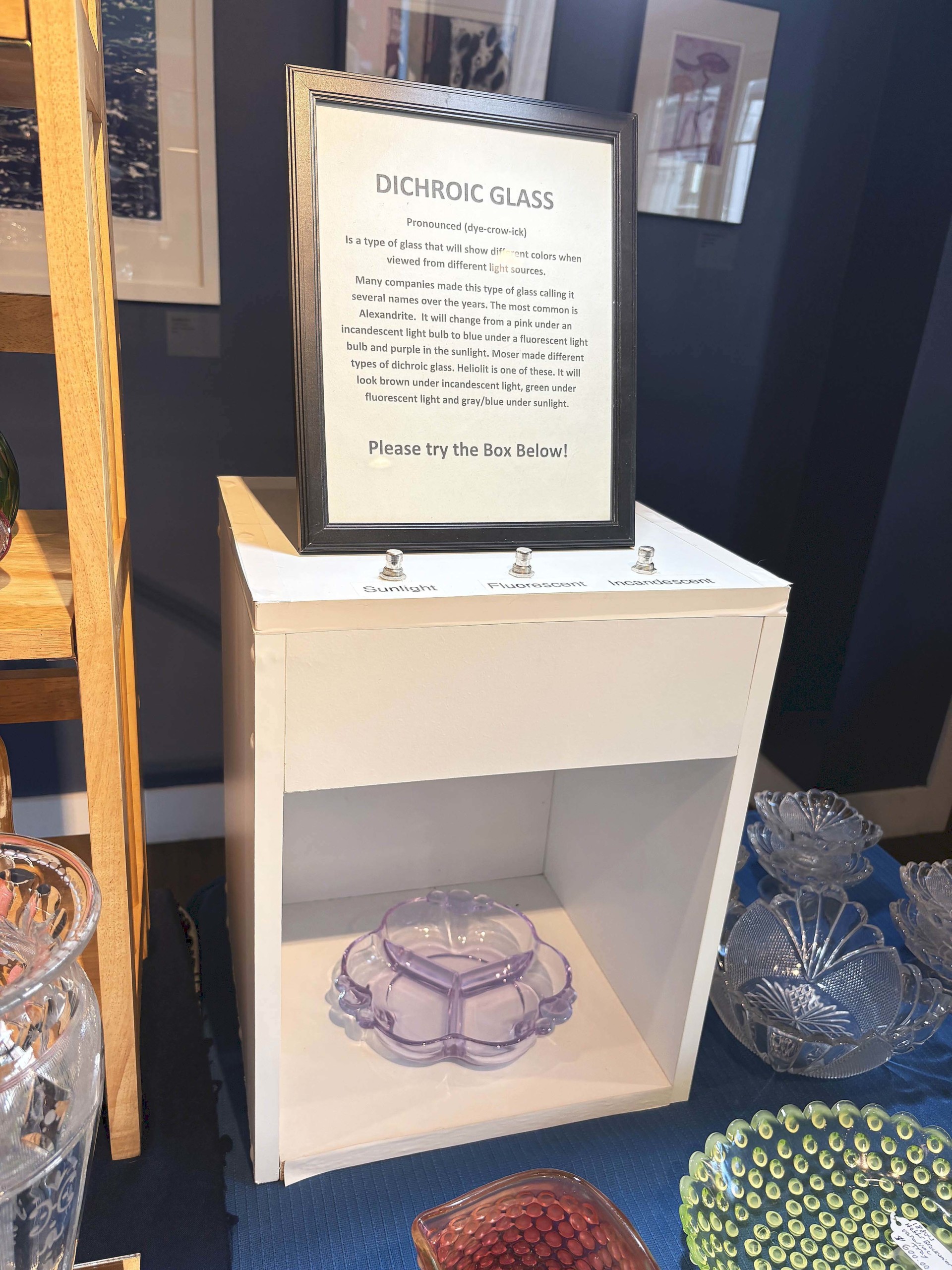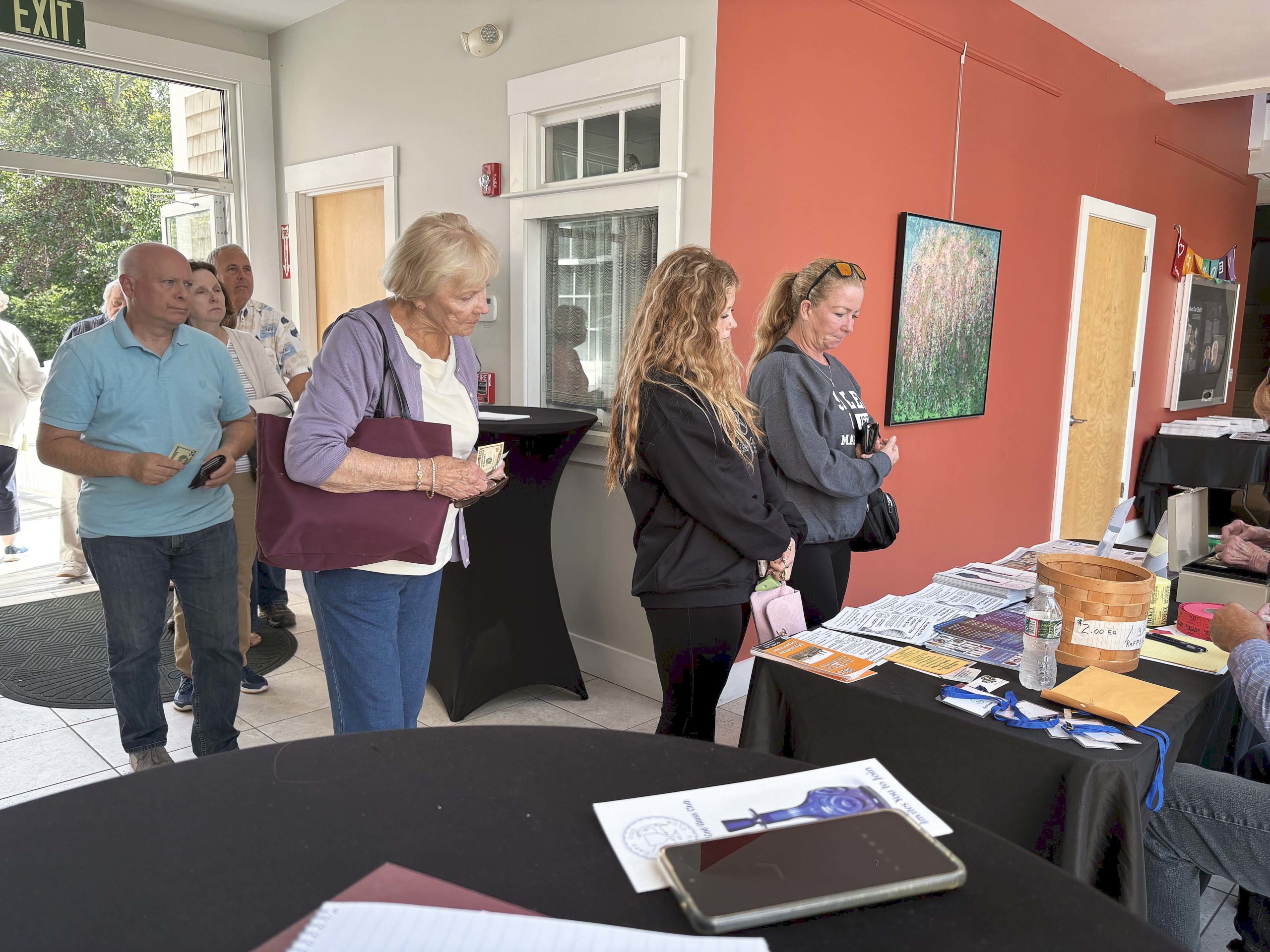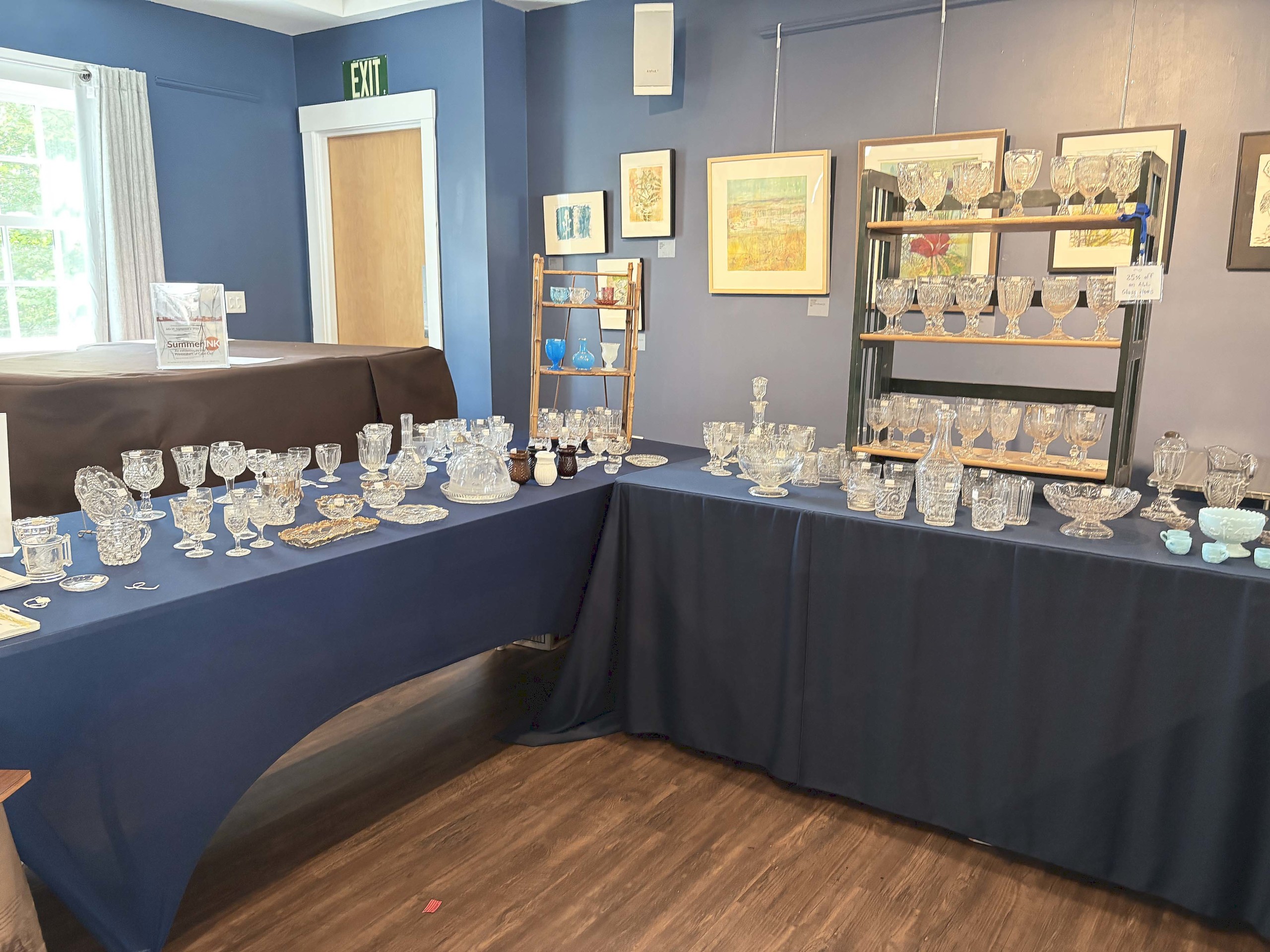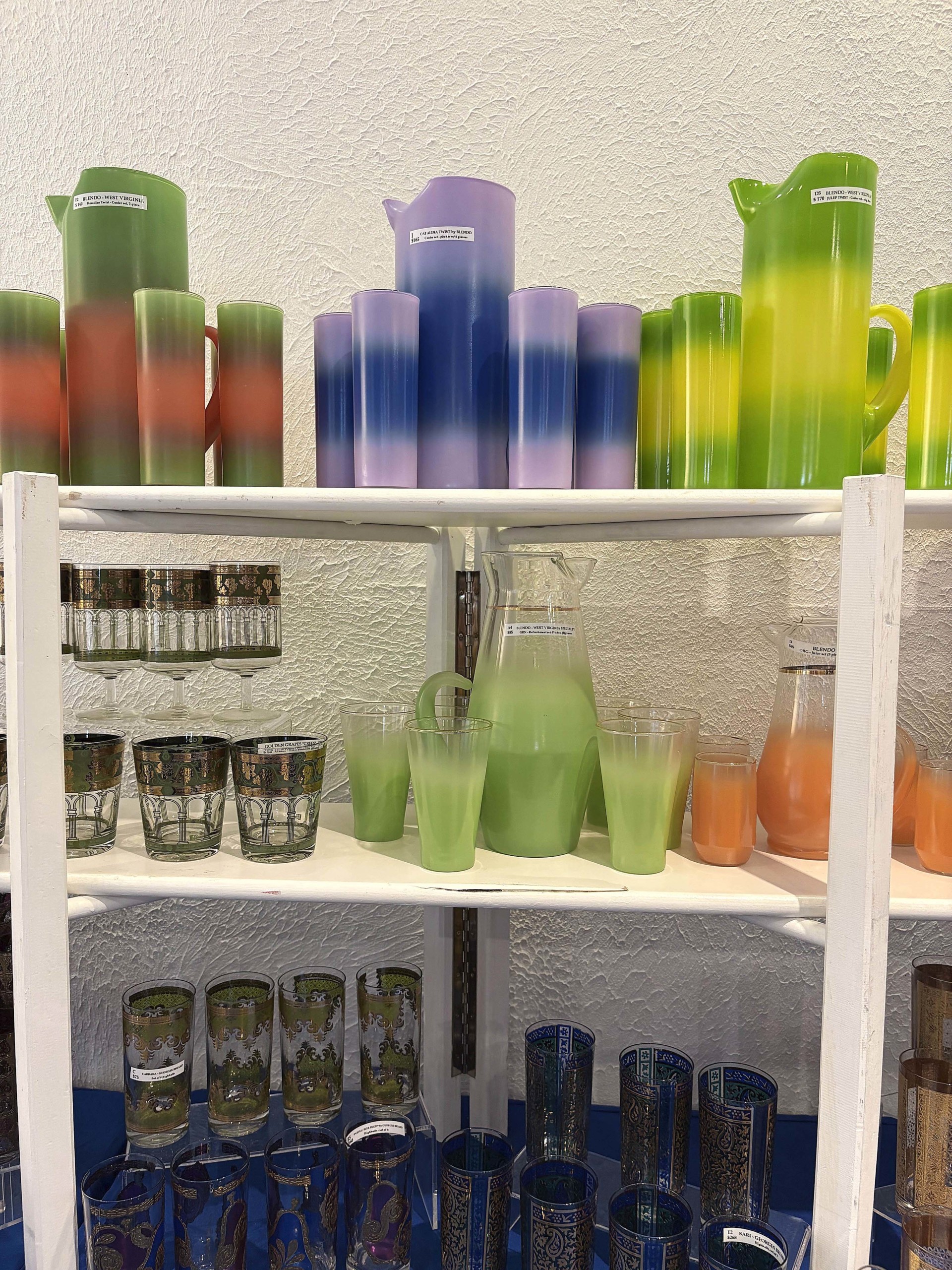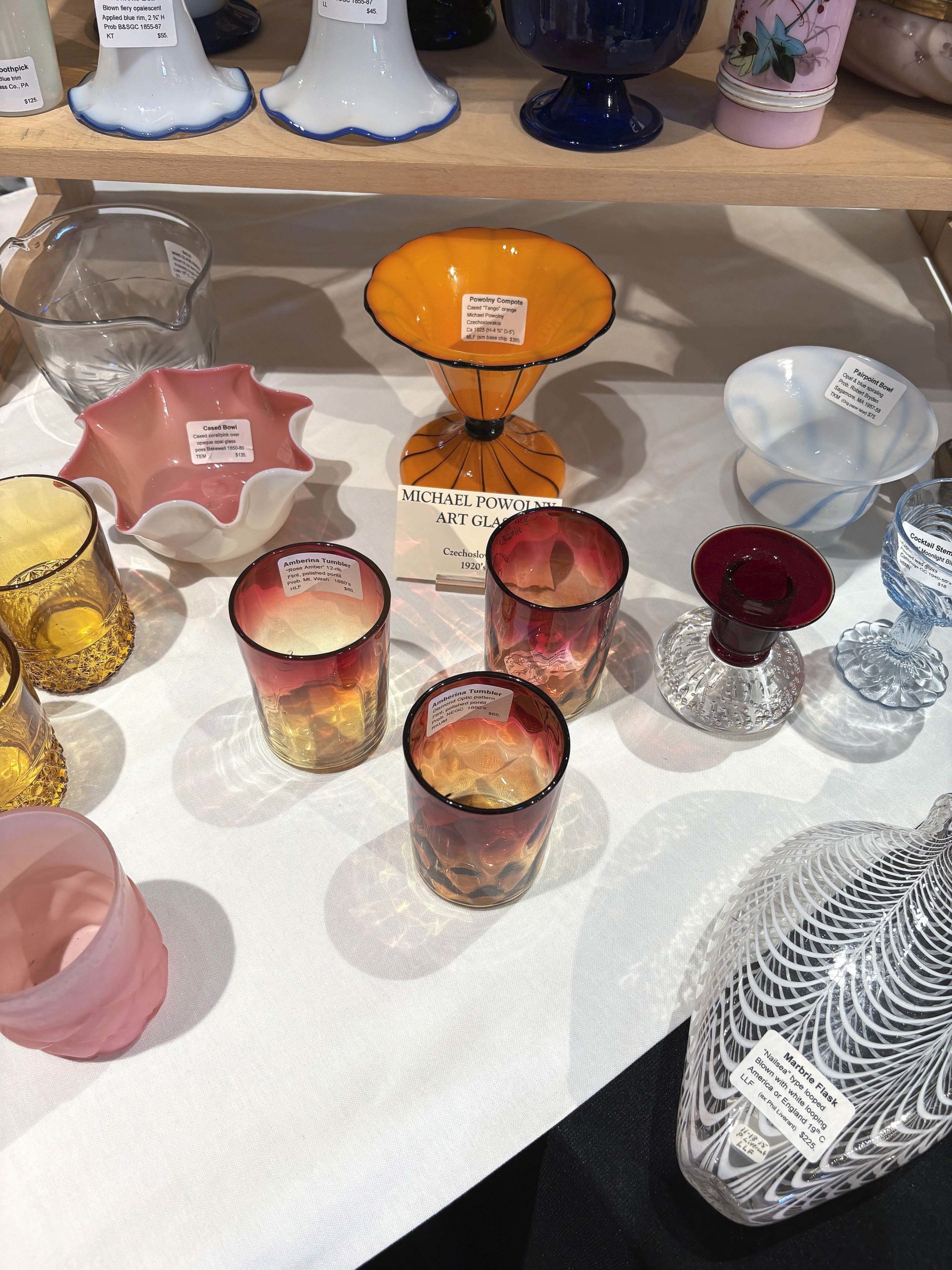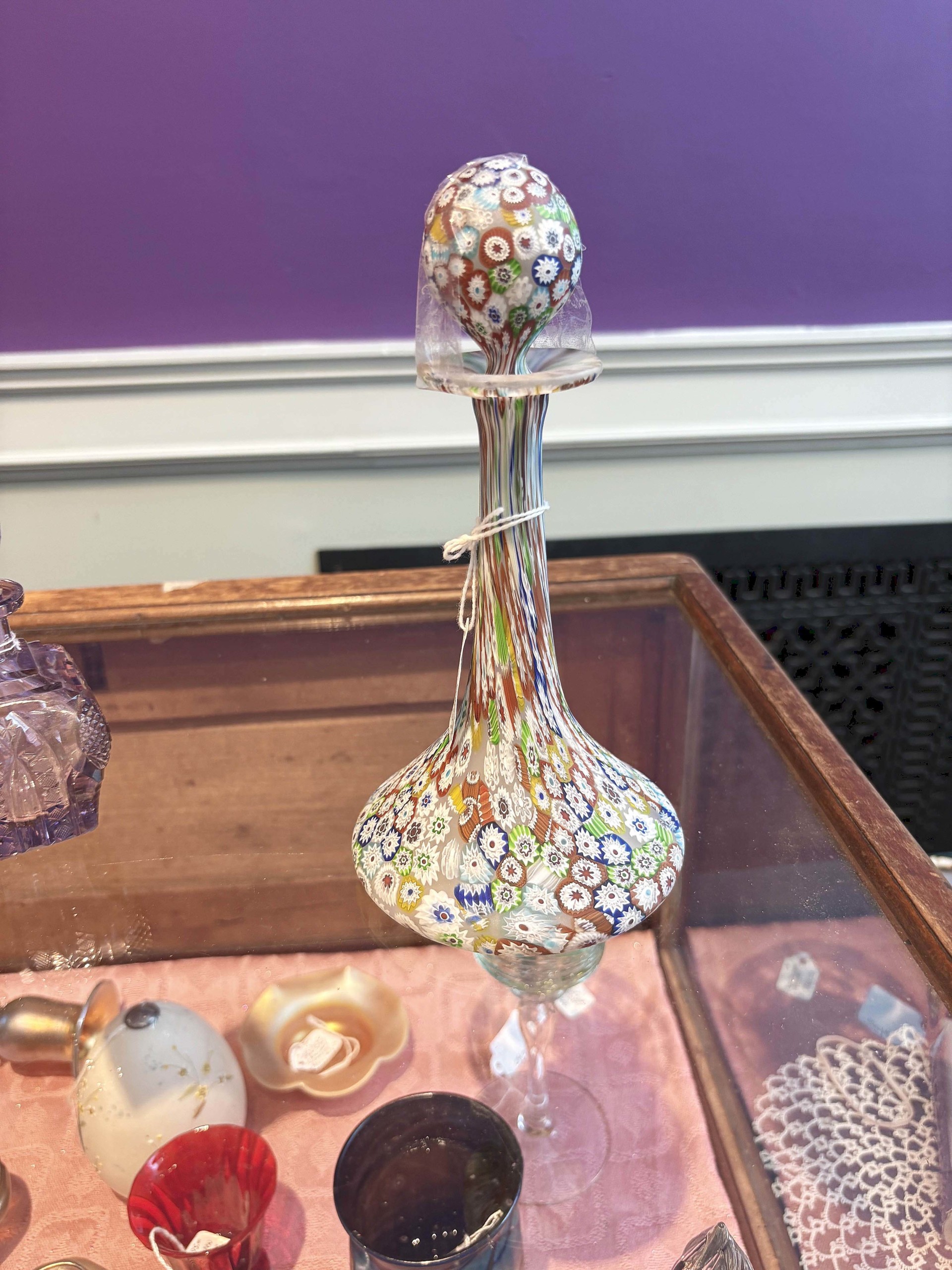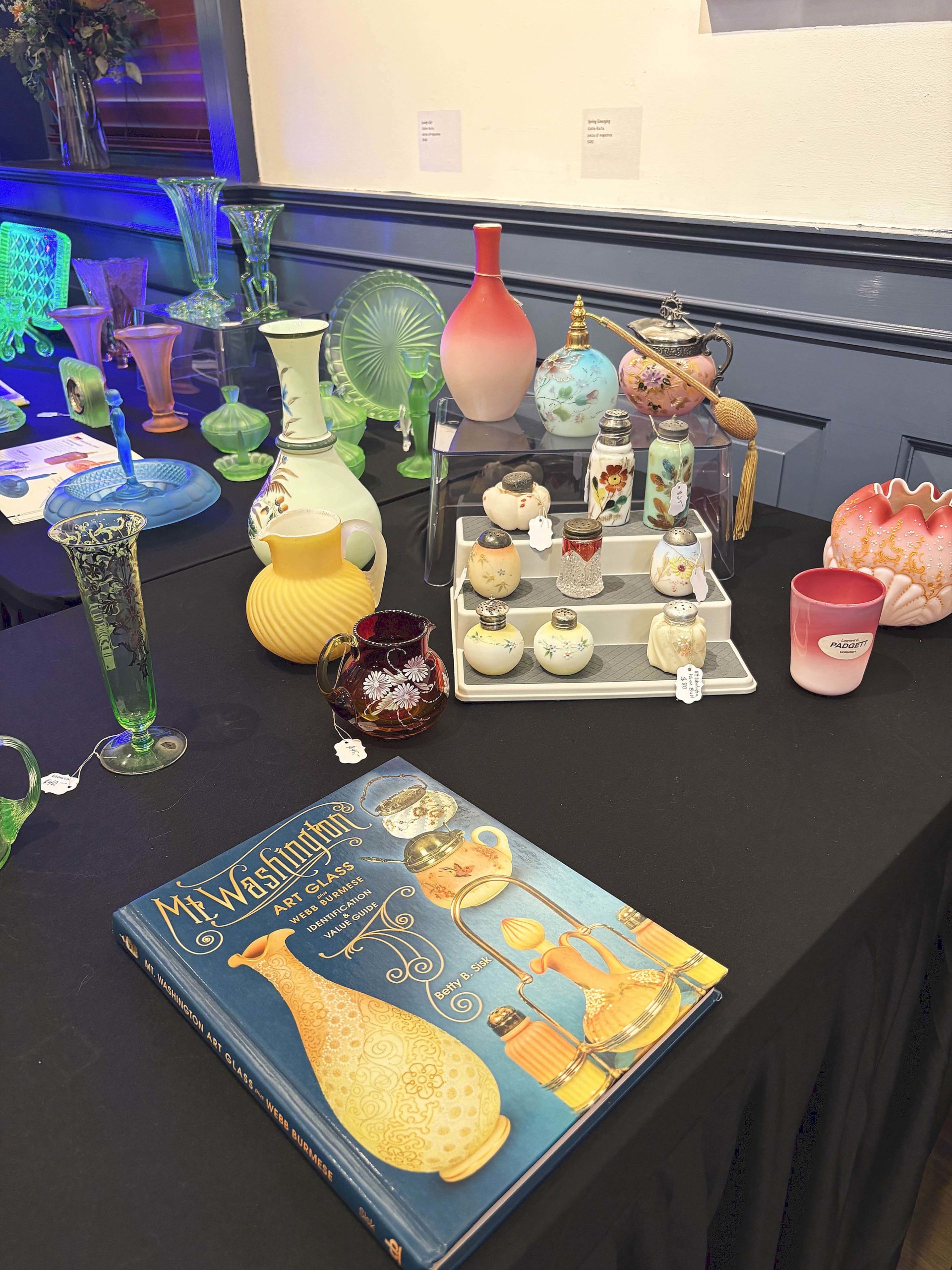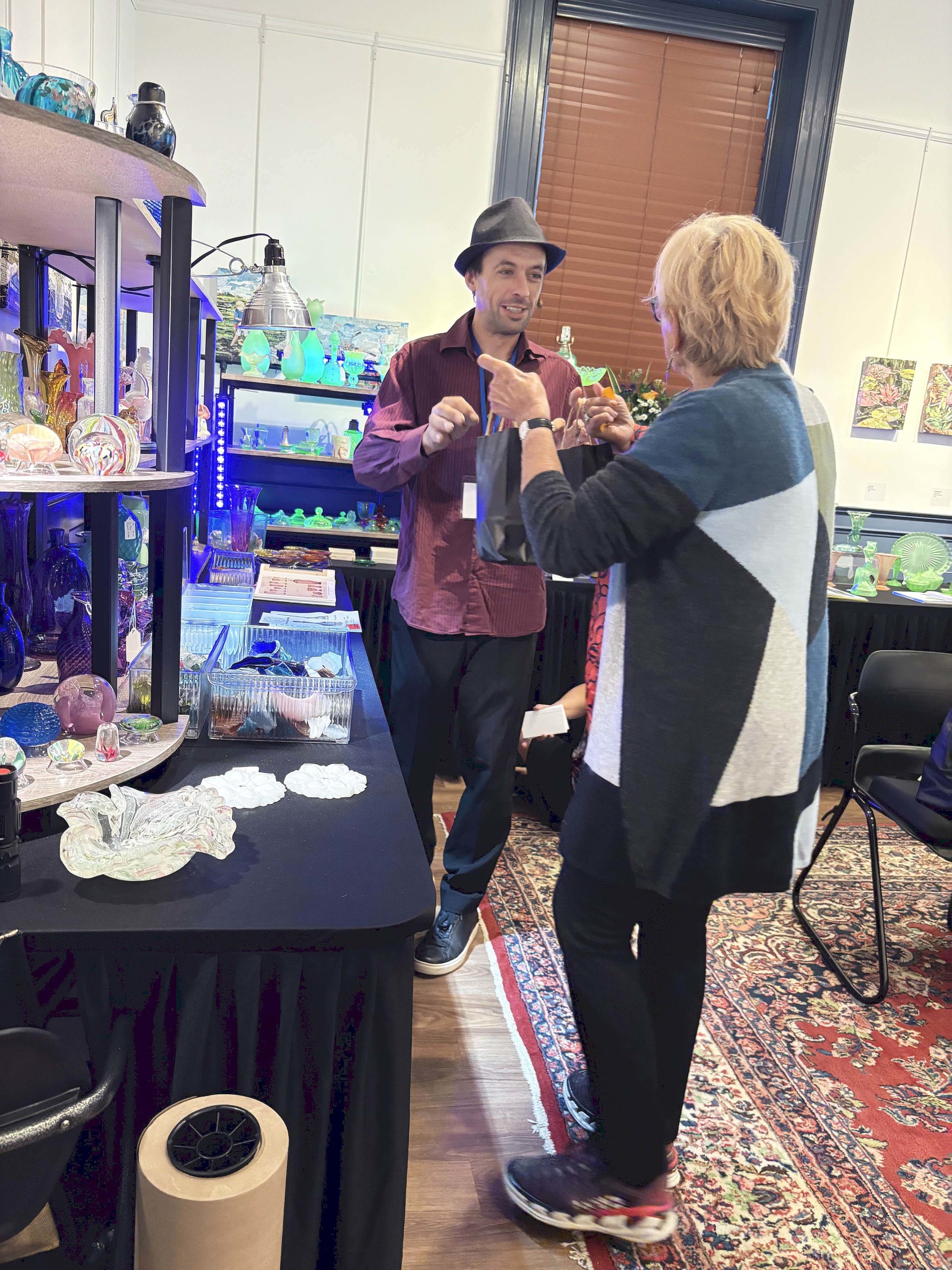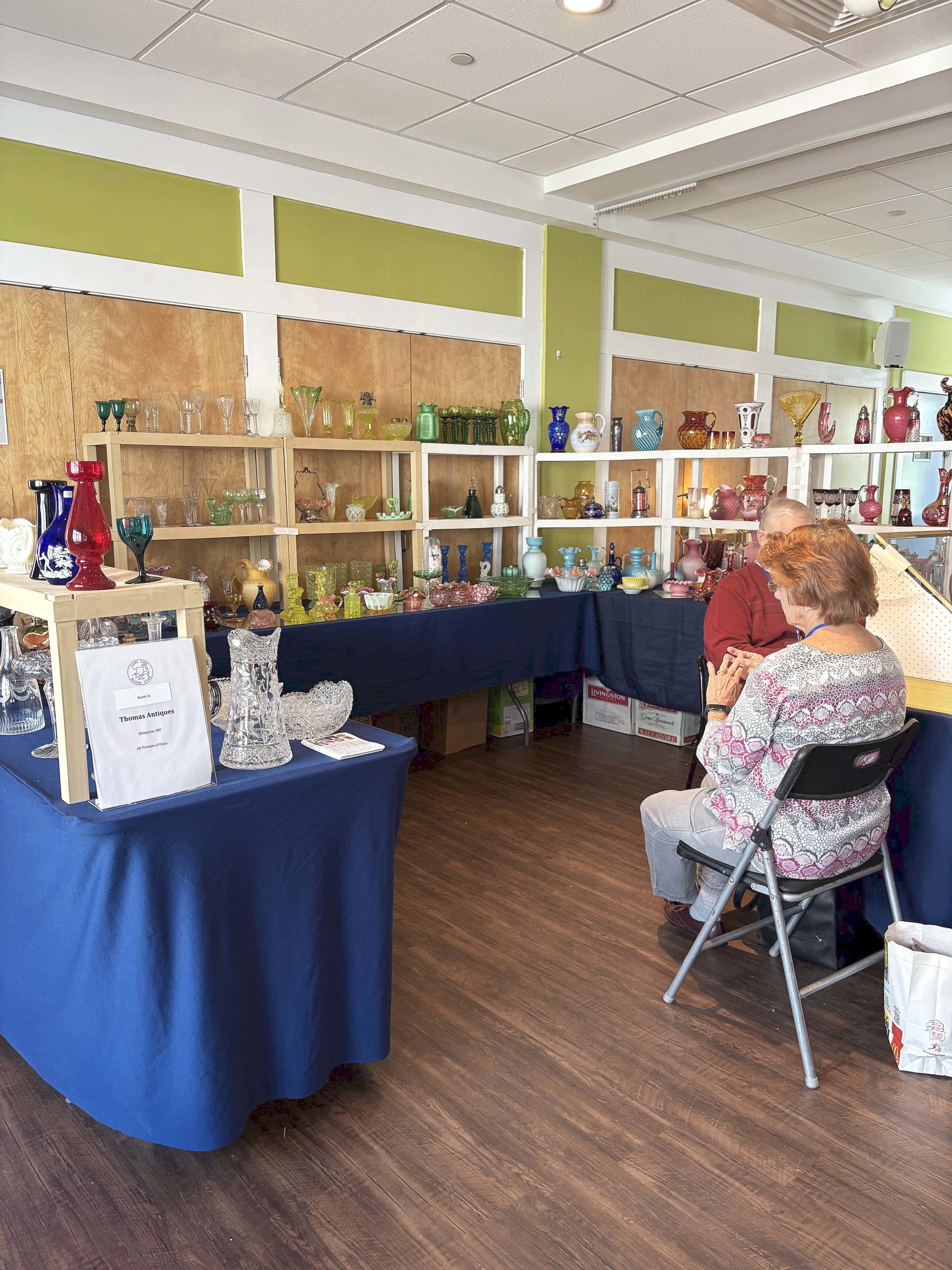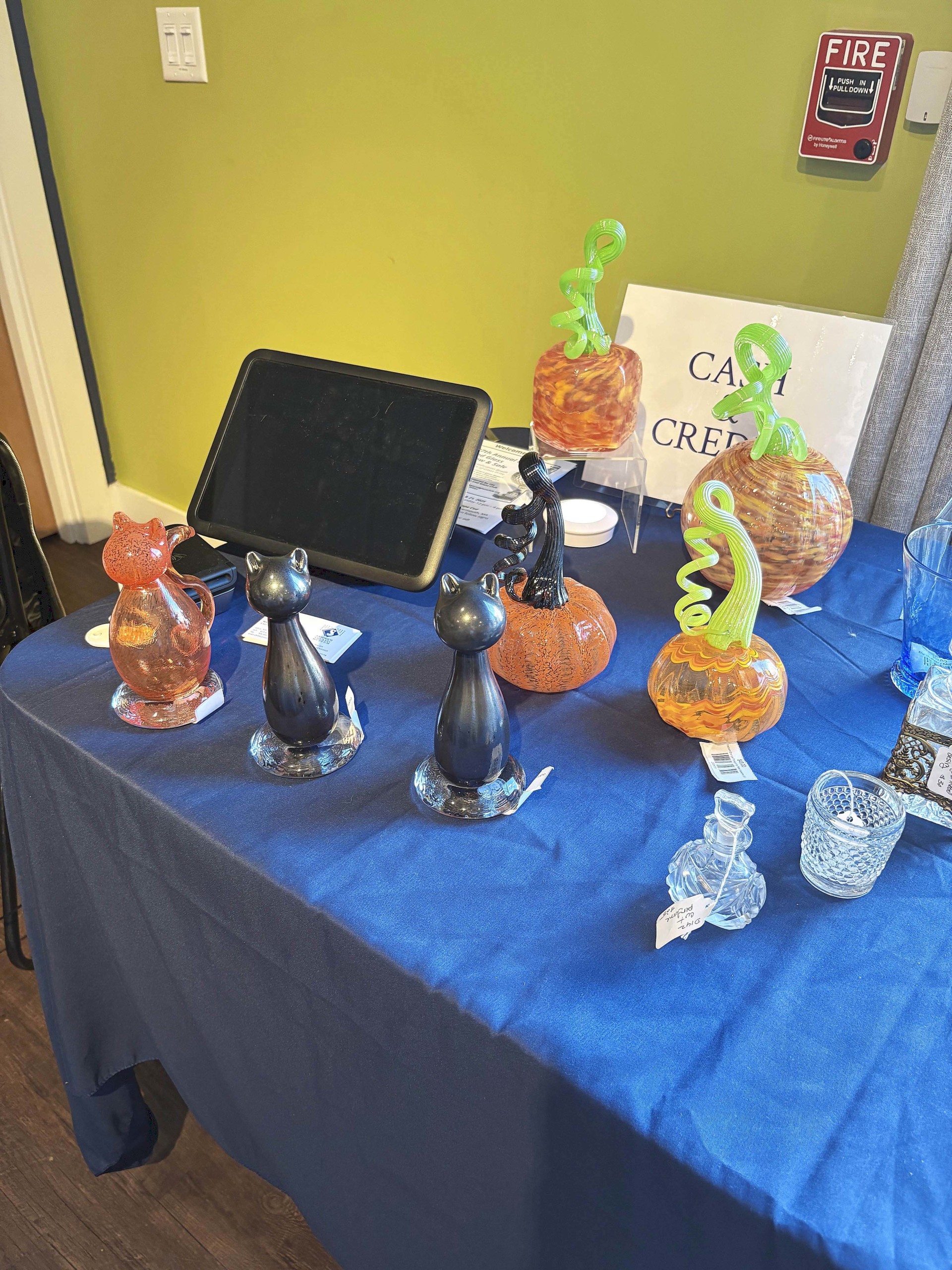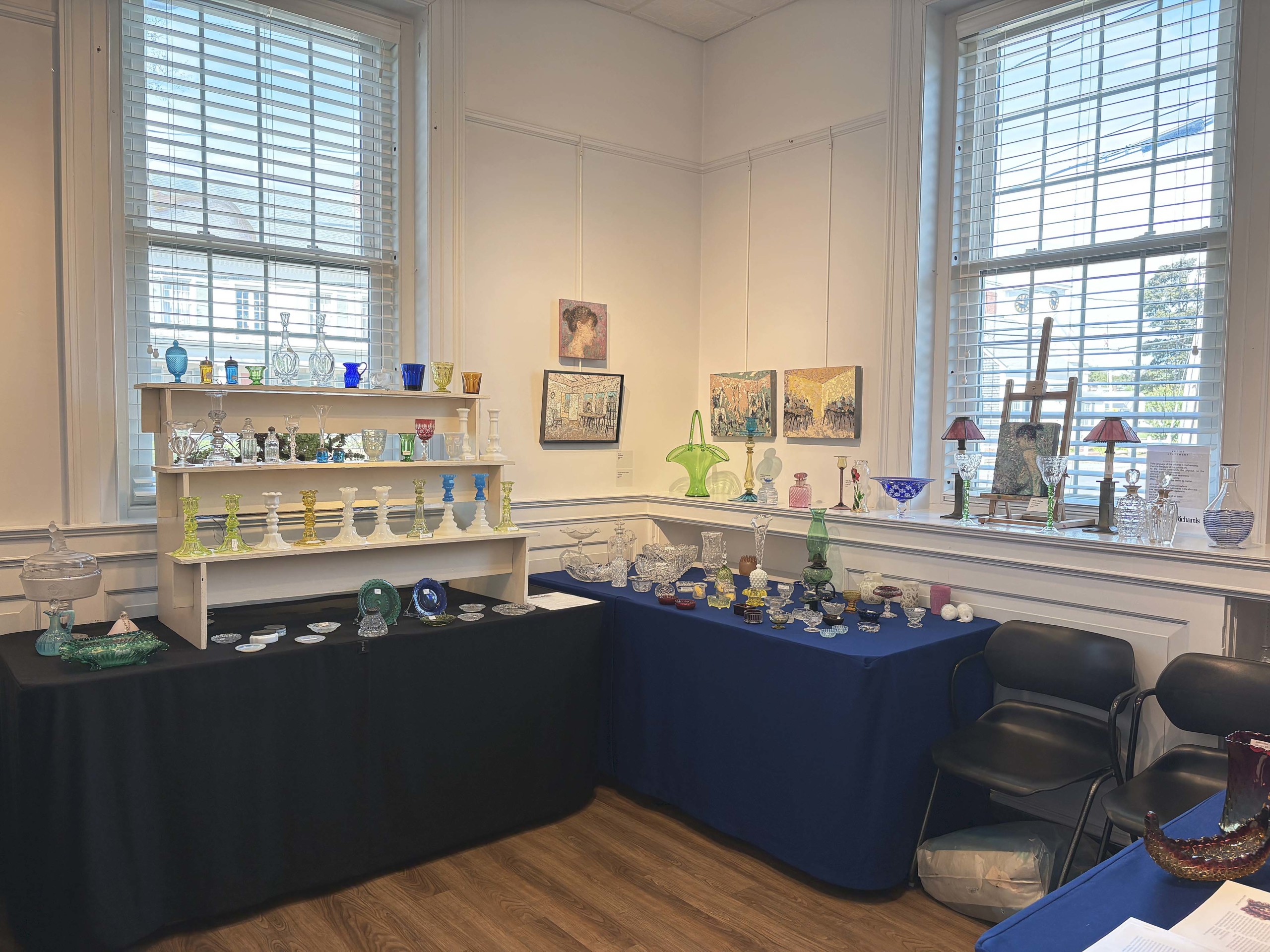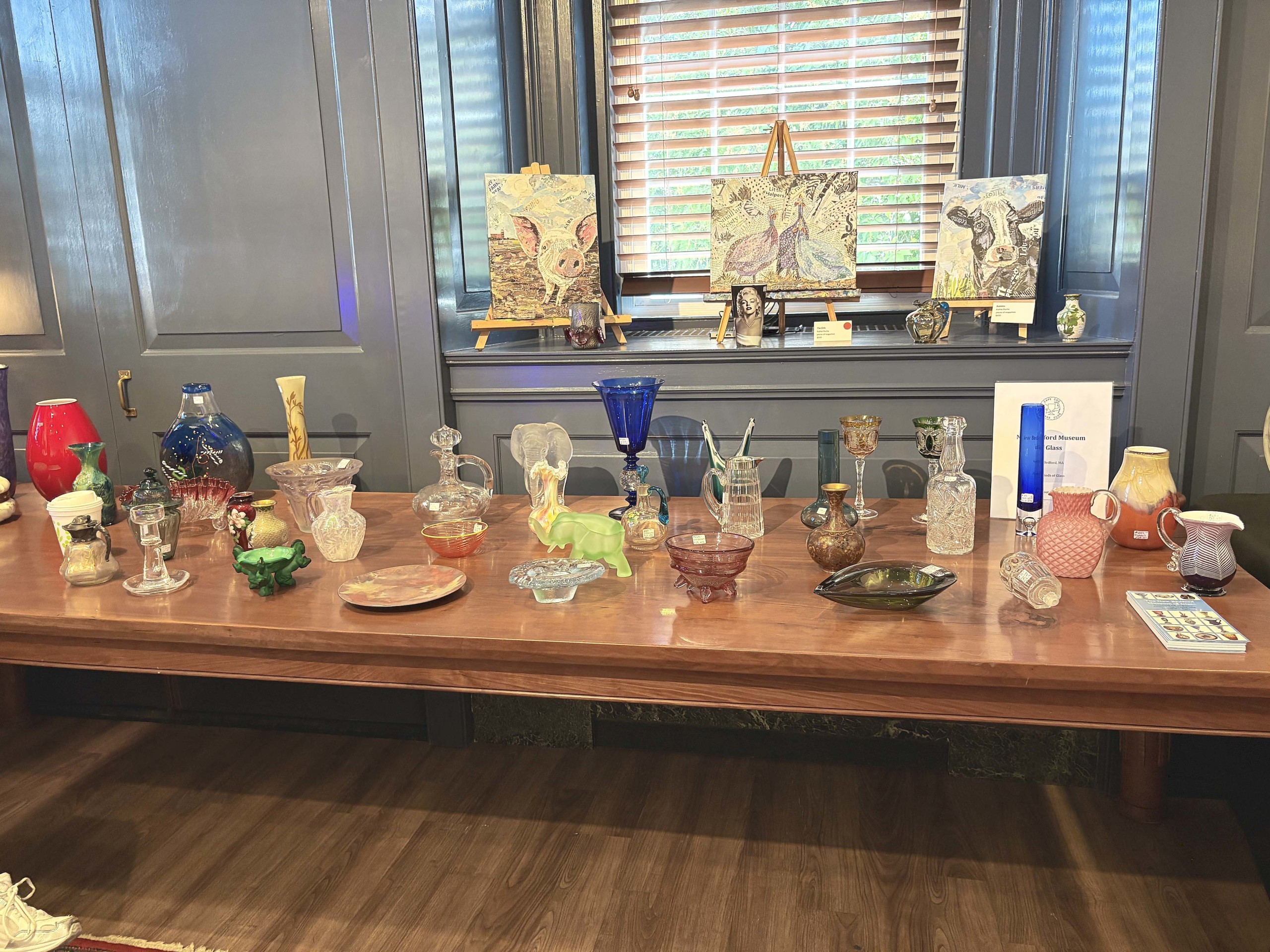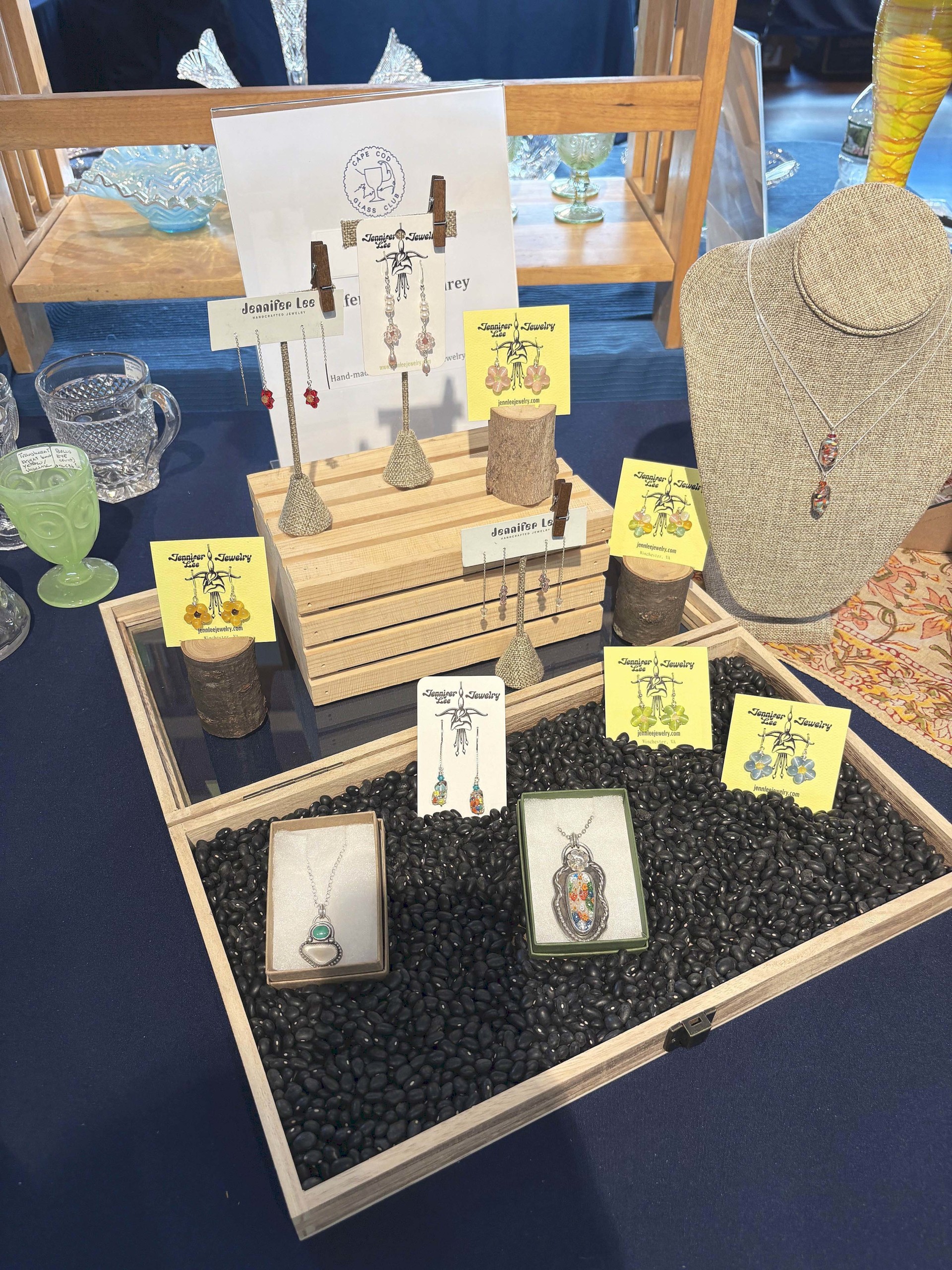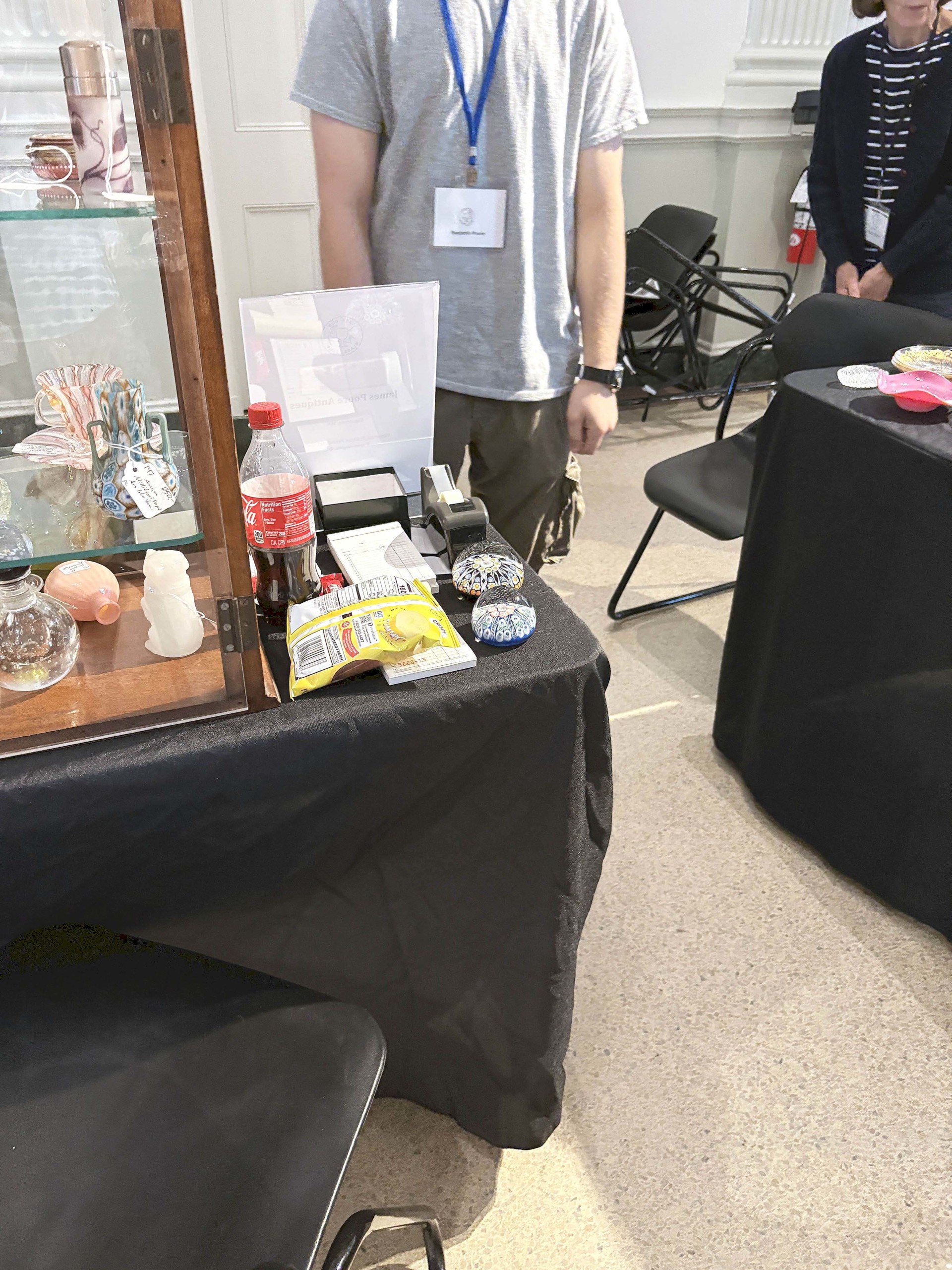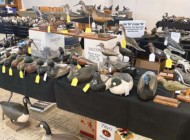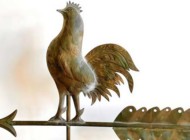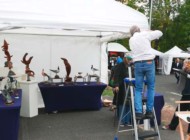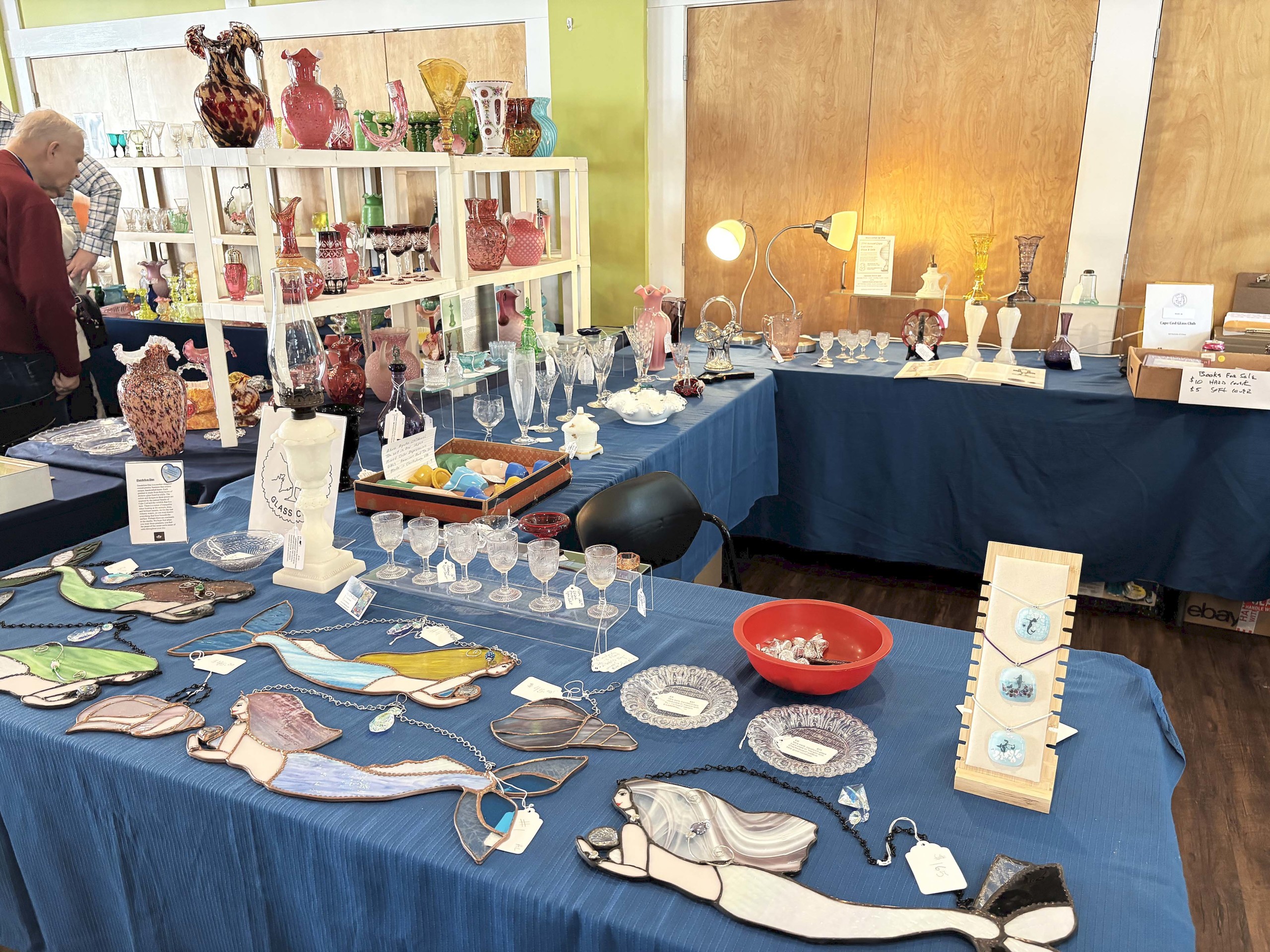
Each dealer who participates donates some pieces to the raffle; this was the table with a wide variety of potential prizes.
Review & Photos by Madelia Hickman Ring
SOUTH YARMOUTH, MASS. — It was the last weekend of the summer and was marked by beautiful weather. Events on Cape Cod always compete with the beach, but the rush of summer visitors had slowed to a more manageable trickle, so conditions were perfect for the 37th Annual Cape Cod Glass Show & Sale, which took place at the Cultural Center of Cape Cod on Saturday and Sunday, September 20-21.
The show is sponsored by the Cape Cod Glass Club (CCGC), an affiliate of the voluntary non-profit National American Glass Club (NAGC), and which holds monthly meetings and regular programs by nationally known glass experts and CCGC members. At every show, each member brings a few pieces to be raffled and supplies some brief information about the pieces.
One of the mandates of the CCGC is to promote the study of all types and periods of glass (with an emphasis on American glass) and, to that end, the show sets up an identification booth that was across the aisle from — and manned by — Bruce Mitchell, who had a robust selection of pressed candlesticks, including a canary-colored Boston Sandwich stick, dated circa 1840-60, that he characterized as “uncommon.”
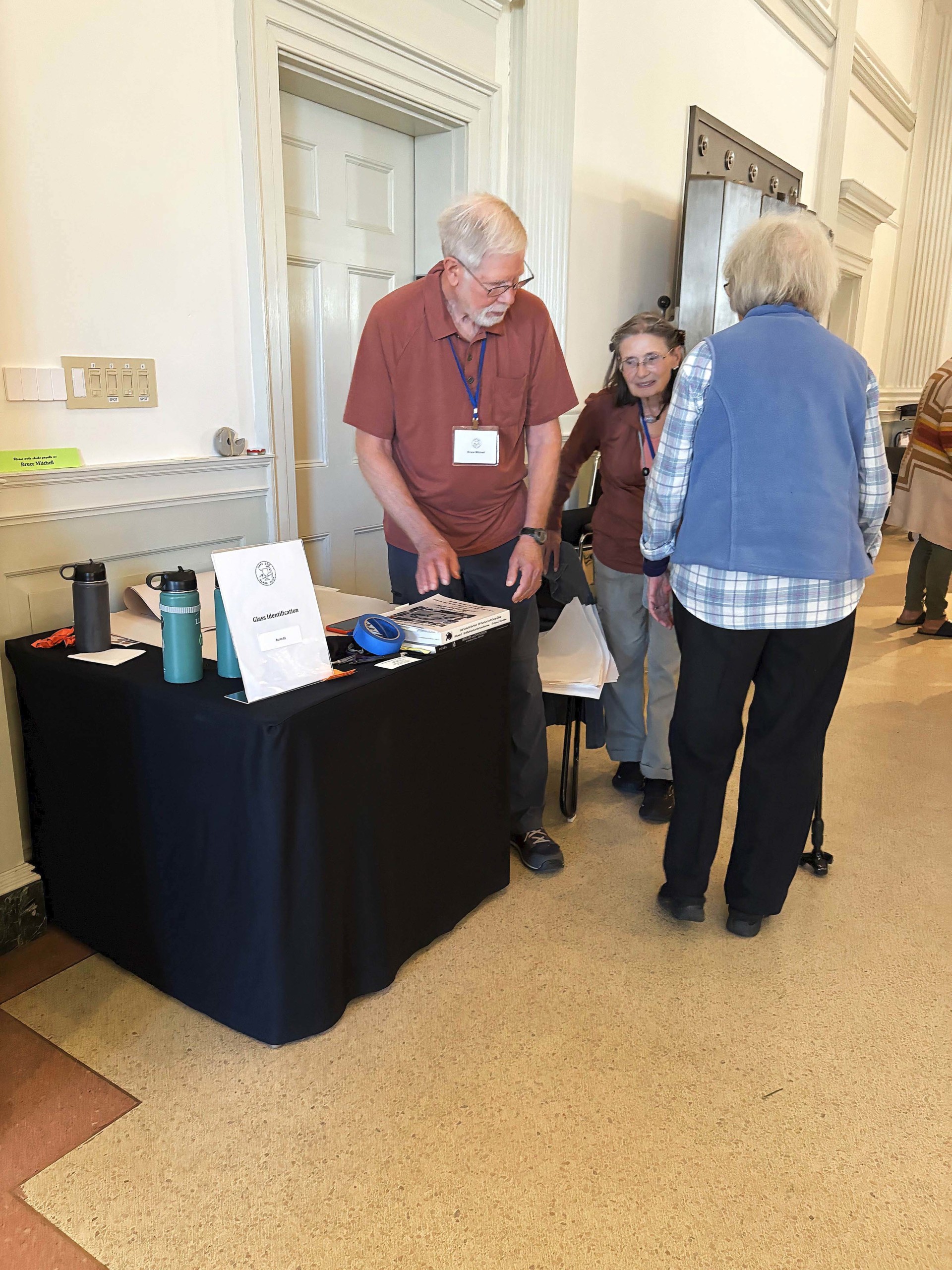
The Cape Cod Glass Club welcomes show visitors to bring a piece of glass if they need help identifying it or just want to learn more about it. Though Bruce Mitchell (left) had his own booth, he was one of the CCGC members on hand for questions or for identification assistance.
The show regularly attracts a few hundred visitors — usually more on the first day — and those numbers were consistent this year, and Betsy Lessig, past president of the CCGC, was pleased at the turnout.
“I think, overall, it was very good. People were extremely happy,” she said.
Lessig introduced us to two new vendors this year: Bill and Jo Thomas (William Thomas Antique Glass) and Rob and Amy McMichael (Bluebonnet Antique Glassware).
The Thomases specialize in all periods of glass from the 1700s to the 1920s and brought “a little bit of everything,” with sales from all categories on the first day.
The McMichaels specialize in Midcentury Modern barware and miscellaneous glass and had a vibrant display. They do 10-12 shows a year, in Tennessee, Georgia, Texas, Ohio and Florida and decided to participate after hearing friends sing the show’s praises. Their offerings are a welcome variety to the largely historical glass in the rest of the show. Two of the rarest sets they had were both in the Sureshot pattern by Imperial Glass, in ruby and emerald colors.
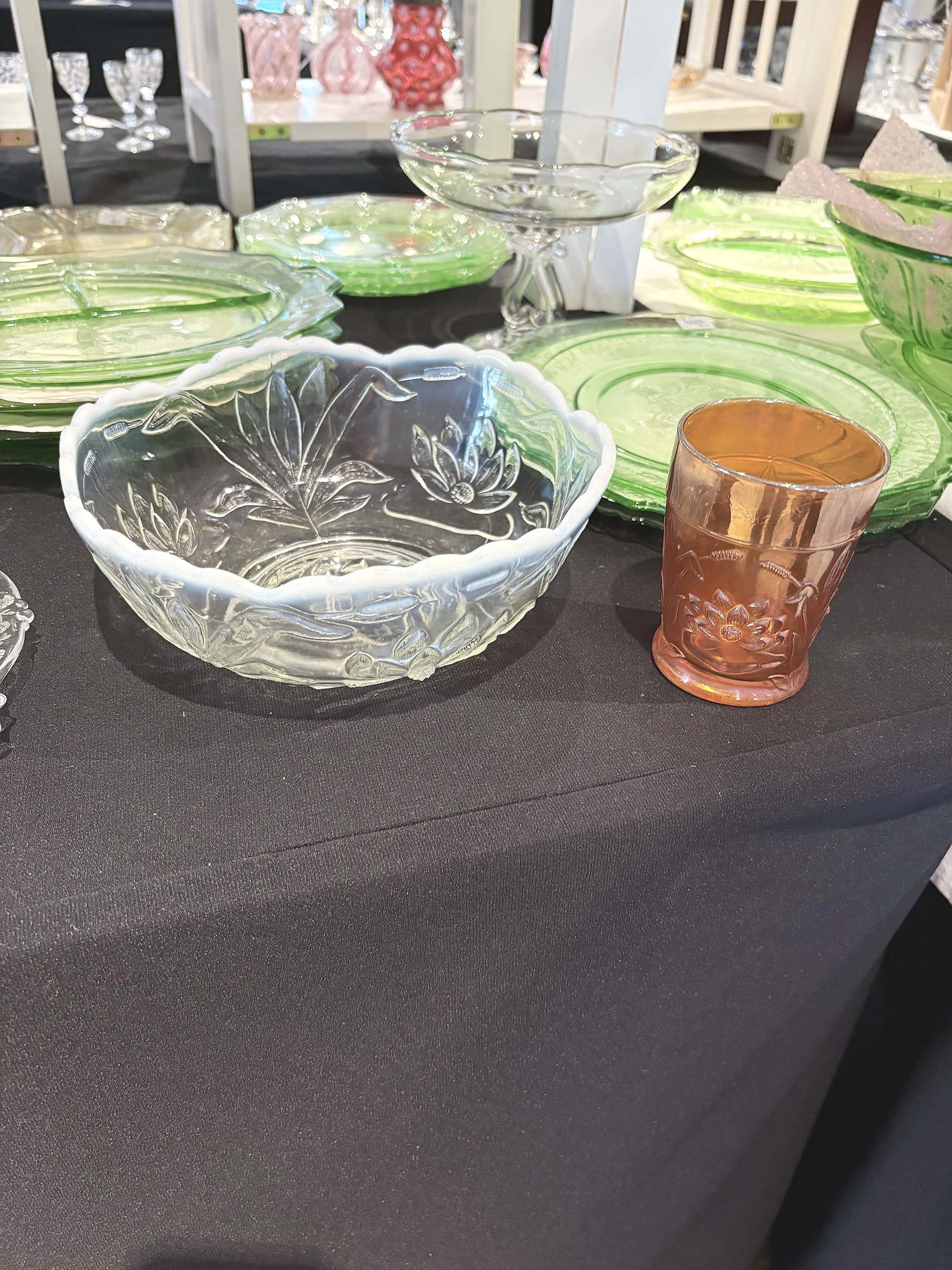
Jim Dwyer of Two J’s had two pieces of Fenton in the Cat Tails pattern: a colorless fruit bowl with border and an iridescent orange tumbler. Bolton, Conn.
The varieties of color of glass are among the more endearing quality of the category and the reason most people start collecting it, so it’s not surprising the show was a veritable rainbow, from the clearest colorless glass to the deepest black, and everything in between. It was the reason Jim Dwyer, Two J’s from Bolton, Conn., began dealing; he specializes in Fenton art glass, which was started in 1905 and was in production until 2011. On the first day of the show, he sold a “Happy Cat” in black amethyst glass with an iridescent carnival coating to a new client from West Virginia who owns a lot of real cats and is now happy to have a glass one.
Diane Lytwyn was Dwyer’s neighbor at the show and another dealer from Connecticut (Danbury). She said she did well on Saturday, selling mercury glass, cranberry opalescent glass, engraved Sandwich glass, carnival and Bohemian glass. She is an expert on mercury glass, having written the Pictorial Guide to Silvered Mercury Glass: Identification & Values (Collector Books, 2005). Among the pieces she showed off to Antiques and the Arts Weekly was a late Eighteenth Century engraved German chalice and a Steuben verre de soie engraved compote.
Jay Rogers was tucked into a corner room off the Cultural Center’s main exhibition space and was delighted to be there, saying the windows on two sides of the small room got great light on Saturday morning, giving the room a “kaleidoscope effect.” He noted the show continues to attract new people, as well as two of his clients from the Midwest who timed a vacation to the Cape so they could attend. First-day sales included some early flint glass, Mount Washington, Steuben, some pattern and cut glass, in prices ranging from $50 to $1,000. “We try to bring things for every price point,” Rogers noted.
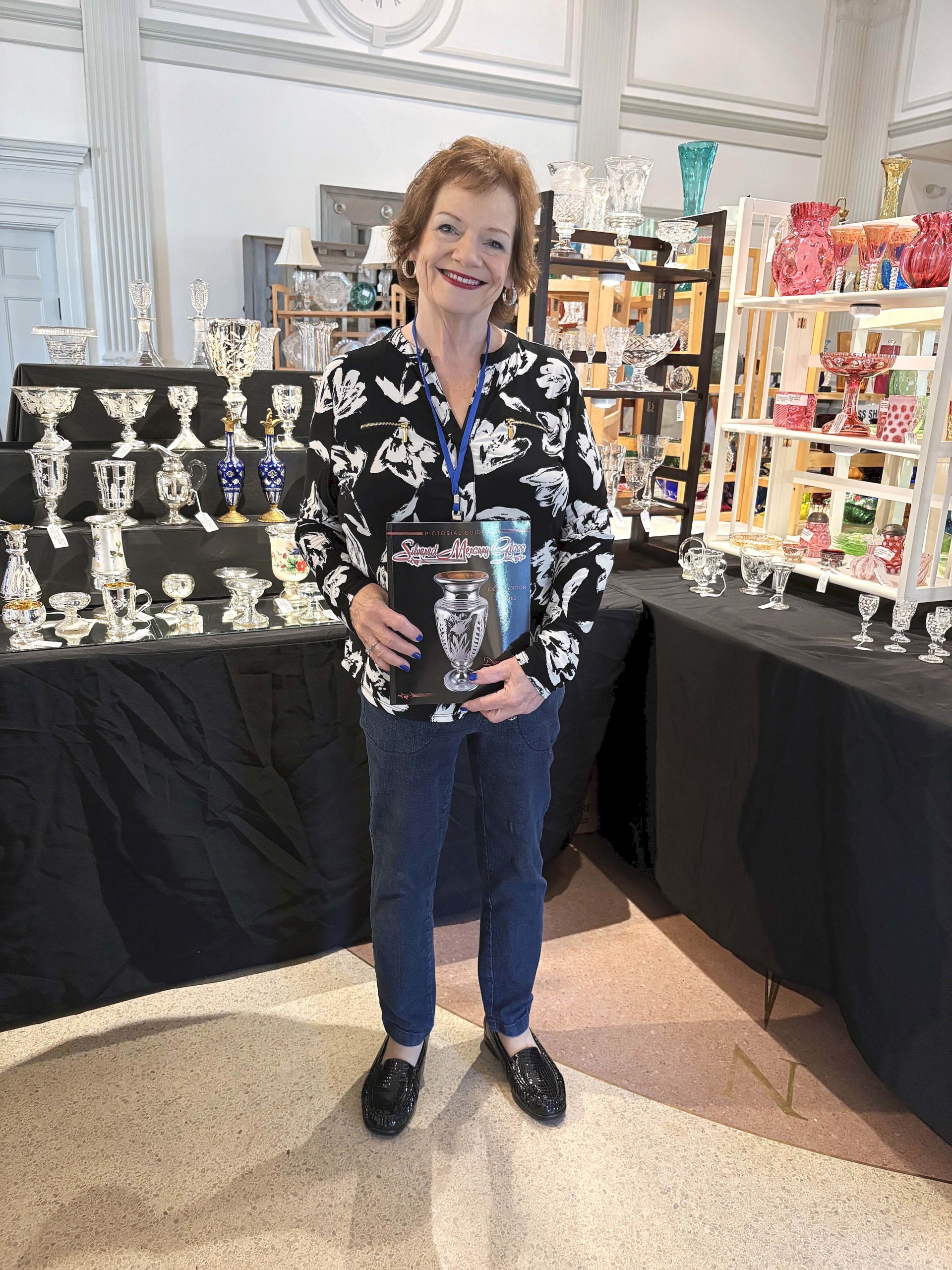
Diane Lytwyn wrote the book on silvered mercury glass and she had a few copies on hand for sale, in addition to an extensive supply of Mercury glass objects. Danbury, Conn.
James Poore advertises Victorian, brilliant period, art glass, paperweights and more. A visitor in Poore’s booth brought forward two paperweights to be written up while we were in the Sagamoore, Mass., dealer’s booth.
Jim Watson is Norfolk, Mass.-based C&J Antiques and he is known for Victorian and art glass. Millefiori pieces — a perfume bottle and several paperweights — as well as ones with latticino decoration — cups and saucers and a bell — caught our eye. He has been doing the CCGC glass show for “a long time” and appreciates the ambience and set up at the Cultural Center, noting it was “more elegant” than the gym at the Cape Cod Community Center, where the show used to take place.
Tim and Tele Saunders are Decades of Dust and, from East Falmouth, Mass., didn’t have to travel far to the show. Tim was in the process of wrapping up a customer’s purchase within the first 30 minutes of Sunday’s show and Tele was talking to potential buyers as they sorted through boxes of glass shards the couple sells as craft materials.
The Stretch Glass Society (SGS) recently acquired the collection of Bill Crowl and brought a selection from that for display, to give show attendees an idea of what stretch glass is. Mary Elda Arrington, the director of the SGS’s popular “Stretch Out” discussions, shared some history of stretch glass: it was made between 1916 and 1930 by nine American glass companies and were sprayed with metallic salts after being pressed or molded and then reheated, with some manipulations that gave it “stretch marks.” It was the precursor to Depression glass.
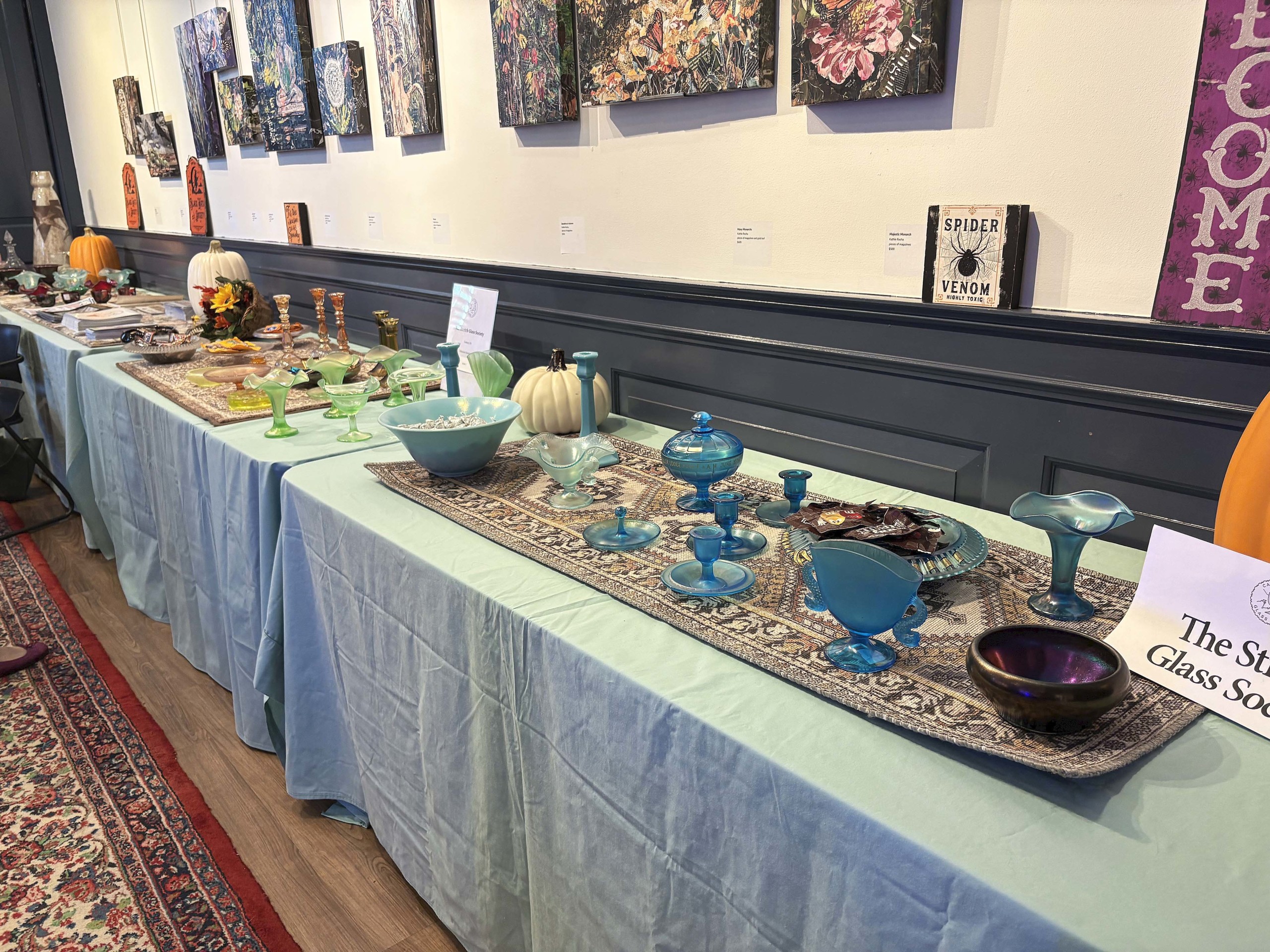
The Stretch Glass Society had a display-only selection, which featured highlights from the Bill Crowl collection. Sunbury, Penn.
Andrew Daniels brought — for display purposes only — two of the rarest and most important pieces he’d ever owned: a cradle vase that had once been in the Vanderbilt’s house in Bar Harbor, Maine, and a New England Glass Baccanali vase from the 1860s that was decorated with partying cherubs. His selection of dichroic glass was getting a lot of attention.
The Sandwich Glass Museum, in nearby Sandwich, Mass., recently acquired a huge collection that had been donated without restrictions by the family of a collector. Some of the pieces were formerly acquired by the museum but others, which fell outside their mandate, were free to be sold, to benefit the museum. A selection from that collection — not all of which were pieces made by the Boston & Sandwich Glass Factory — were at the show. Bonnie Campbell Lilienfeld, a curator at the museum, was there alongside executive director Mary Childs. Both said that the museum hosts hourly glass-blowing demonstrations daily in which local artisans and craftspeople create works that are then sold. Some of these that were Halloween-themed were also brought to sell at the show.
The dates for the 2026 Annual Cape Cod Glass Show & Sale have not yet been announced. For information, www.capecodglassclub.org.

